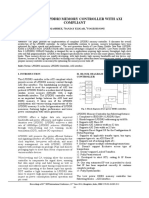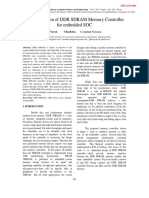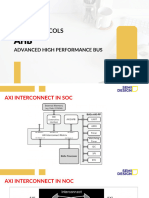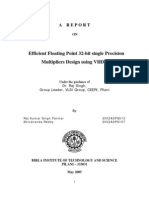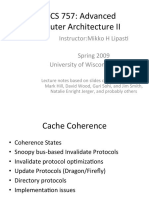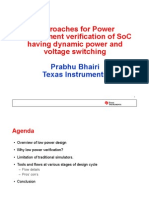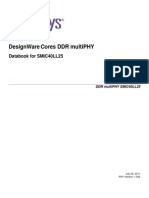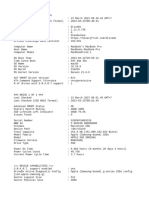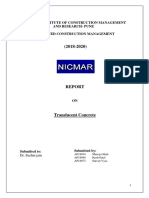0% found this document useful (0 votes)
691 views91 pagesDRAM Interface Overview
This document provides an overview of DRAM interface technology. It begins by defining memory and DRAM, explaining that DRAM is dynamic random access memory that requires periodic refreshing of stored data. It then covers DRAM cell structure and operation, comparing 1 transistor 1 capacitor DRAM cells to other memory technologies. The document discusses the evolution of DRAM interfaces from asynchronous to synchronous designs like SDRAM, DDR, DDR2 and DDR3. It covers key aspects of synchronous DRAM interfaces like pipelining, multi-banking, on-die termination, and source synchronous signaling. The summary concludes by noting some of the challenges for graphics memory interfaces like achieving high data rates over 2Gbps while maintaining low voltage and current
Uploaded by
ravisguptajiCopyright
© © All Rights Reserved
We take content rights seriously. If you suspect this is your content, claim it here.
Available Formats
Download as PDF, TXT or read online on Scribd
0% found this document useful (0 votes)
691 views91 pagesDRAM Interface Overview
This document provides an overview of DRAM interface technology. It begins by defining memory and DRAM, explaining that DRAM is dynamic random access memory that requires periodic refreshing of stored data. It then covers DRAM cell structure and operation, comparing 1 transistor 1 capacitor DRAM cells to other memory technologies. The document discusses the evolution of DRAM interfaces from asynchronous to synchronous designs like SDRAM, DDR, DDR2 and DDR3. It covers key aspects of synchronous DRAM interfaces like pipelining, multi-banking, on-die termination, and source synchronous signaling. The summary concludes by noting some of the challenges for graphics memory interfaces like achieving high data rates over 2Gbps while maintaining low voltage and current
Uploaded by
ravisguptajiCopyright
© © All Rights Reserved
We take content rights seriously. If you suspect this is your content, claim it here.
Available Formats
Download as PDF, TXT or read online on Scribd
/ 91




